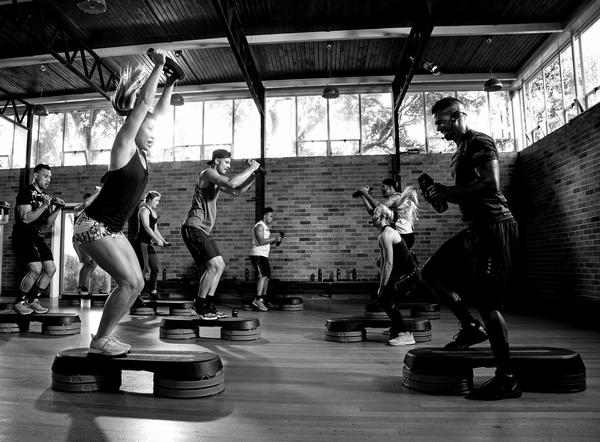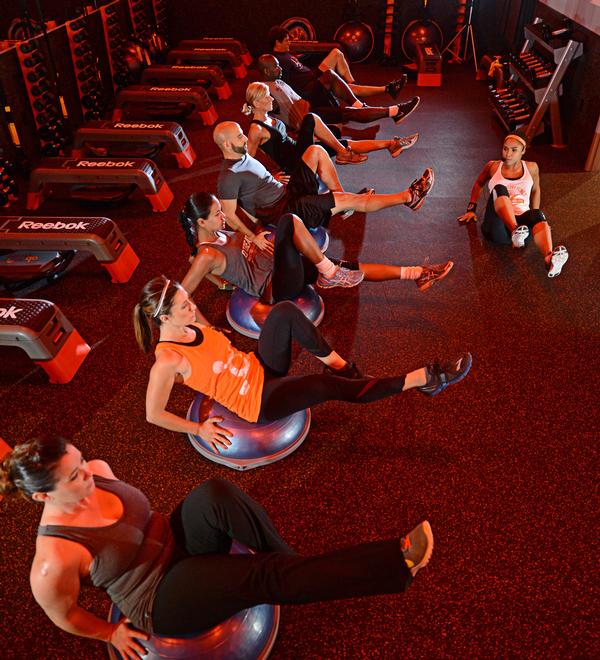Talking point: Is too much HIIT risky?
High Intensity Interval Training (HIIT) is now an industry favourite, but it can lead to injury for instructors and members. Kath Hudson asks the experts how to keep this workout safe

Created as a tool for training athletes, HIIT has achieved success in gyms through classes that aim to help members hit 85 per cent of their maximum heart rate, interspersed with periods of rest or active recovery. Classes are high energy, fun and often short, which adds to their popularity.
Used appropriately, HIIT classes can deliver many health gains for participants, including weight loss, improved aerobic fitness and metabolic adaptations, such as improved mitochondrial function.
Although your members might love HIIT, you shouldn’t let them come every day. Experts advise that the average member should participate in no more than two classes a week to avoid injury. The same applies to less fit instructors who need to be mindful of the number of HIIT classes they teach.
So what do you need to bear in mind when running a HIIT programme? How can you make sure instructors and members gain the benefits of HIIT, without risking injury or burn out? And how should HIIT be used within members’ personalised programmes for optimum benefit?
Stephen Seiler,
Faculty of Health and Sport Sciences ,
University of Agder, Norway

My research is primarily on how elite athletes train for endurance, and I’ve become known for the 80/20 rule: that high intensity training should make up 20 per cent of a weekly training programme, with the other 80 per cent completed at lower intensity. Elite athletes have the discipline to stick to this, but many other members fall into the intensity black hole: going too hard on the low intensity sessions and then not having the energy to push themselves on the high intensity workouts.
Nobody, including instructors, should be doing more than two HIIT classes per week. However, as trainers are not reaching the same intensities as those in their class, they can teach more classes than that, particularly with spinning, where it’s easy to modify the effort, while still keeping up the energy in class.
What is crucial is that instructors warm up properly before they come to class, so that they’re able to demonstrate the moves safely. In my opinion, their main injury risk would be if they let their ego get the better of them and try to impress members by lifting heavy loads in a Crossfit class when they’re not properly warmed up.
There are more risks to participants than instructors with HIIT, so it’s vital to make sure everyone warms up and cools down properly, is coached to perform the moves correctly and stays hydrated. However, with these provisos, the risks to both instructor and participant are low – the risks involved with not exercising are higher.
HIIT is an effective workout: the group format is motivating and it’s easy to market the short classes that fit neatly into a lunch hour. However, the fitness industry should be educating its clients on how to use it effectively.
In my opinion, nobody really gains anything from doing more than two HIIT classes a week and high intensity sessions also need to be supported by longer, low heart rate sessions, such as an easy run or spin class.
Operators also need to bear in mind that sustainable programmes over time give clients the best long-term results. An individual needs to do a mix of activity for which they can maintain their motivation week after week and it’s hard to do this with purely short, hard sessions.
“Many members fall into the intensity black hole: going too hard on low intensity sessions, then not having the energy to push HIIT workouts”
Steve Tansey,
Head of research and development UK,
Les Mills

Although there isn’t currently research to quantify how much more load HIIT puts on the body compared to a regular exercise class, the additional challenges include a higher heart rate and greater tension on the muscles and skeleton.
To ensure participants get the best out of this short but high intensity workout, our coaching model focuses on personal observation, correction where needed and encouragement.
Our Les Mills HIIT concept – called Les Mills GRIT – requires instructors to only participate in around 60 per cent of the workout, spending time coaching individuals in the class, so they’re not subject to the same intensities.
We train instructors to start the block of exercises and get the energy going, before moving to the floor to instruct and then finish the block with the class. This way they have the camaraderie and relationship with the class, and can spot those that need more coaching, without reaching the same levels of intensity and so not getting fatigued.
With this model, our instructors could teach up to six or seven HIIT classes a week, as they’re not hitting the same peaks of heart rate.
The programme has been scientifically put together to be accessible and safe, and we test what happens to the body during each exercise.
Progressions and regressions, adaptations and alternatives are taught for every exercise, so they’re inclusive and cater for all abilities and learning styles. We don’t use competition in our classes, because this can lead to participants performing exercises too quickly and losing form, which in turn can lead to injury.
“With our model, instructors could teach up to six or seven HIIT classes a week, as they’re not hitting the same peaks of heart rate as participants.”
Natalie Constanti,
Zumba: Master trainer ,
STRONG

HIIT is an effective way to train, however, many of the class formats include exercises that can repeatedly strain the same areas of the body.
When I was a self-employed instructor, delivering up to 22 classes a week, many of which were HIIT type formats, areas of my body started to feel the strain and became unbalanced, due to repetitive back-to-back plyometric training. My quadriceps became over developed and fatigued due to quad dominant exercises.
I realised if I was going to have longevity as a fitness professional, I needed to put a self care programme into place: something that would build strength and stability around my vulnerable areas, while improving mobility, balance and joint function to decrease the potential for injury.
I follow a three step protocol, involving prehab, recovery and strength training (see below). I recommend all instructors do this to keep themselves injury free.
Zumba has put together a new HIIT programme, called STRONG by Zumba, which has been designed with a focus on sustainability for both the instructors and participants. Each ‘quadrant’ of the workout has been designed to achieve a specific outcome, with intensity gradually building.
The class is not designed around back-to-back intervals; we implement active recovery after every high intensity movement, so participants can drive into the next high intensity move without comprising their form and alignment.
Ellen Latham,
Physiologist, designer and founder,
The Orangetheory workout

There isn’t an upper limit to how many classes our instructors can teach because at all times they’re focusing on coaching the class. They wouldn’t be able to look after 28 participants if they were doing the workout themselves – we want them to be continually monitoring participants’ heart rates, form and technique to make sure everyone is performing the movements correctly and at the right intensity.
This workout was devised, by myself, to bring about metabolic change on a cellular level and is safe to do for decades – I’m 61 and we have people coming in their 70s and 80s. We advise our members to work to the 80/20 rule. They could come two or three times a week, but they should also be doing other activities: strength training if they want to build muscle mass and also low heart rate exercise like yoga and pilates. We tell our members that this is their “multi-vitamin” and they mustn’t overuse it, whereas their other exercise is a singular vitamin, which they can take more regularly.
Instructors should also take a multi-disciplinary approach to ensure that they remain in balance. I’m a big advocate of pilates to keep the internal structural muscles strong.
The outside muscles are worked in the gym, but it’s really important to keep working the internal muscles as well, including the pelvis, shoulder girdle and spine. You realise this when you get to your 50s and 60s! ,null
“We advise our members to work to the 80/20 rule. They could come two or three times a week, but they should also be doing other activities”

Natalie Constanti’s self-care protocols
The STRONG by Zumba master trainer takes us through her professional self care programme

Prehab
Every morning I take each joint through its full range of movement. This provides information to the nervous system that my body knows I have joints ready to be used. It’s also a self assessment, as I can identify if there’s an area that needs more attention.
Recovery
This is important to make sure I’m physically capable of performing my job.
For example, for over-fatigued quadriceps, I use trigger point massage or a foam roller to release tension, followed by a couch stretch to release the quads and hip flexors. I also use PNF (Proprioceptive Neuromuscular Facilitation).
Working out
Training for your job as a fitness professional is important and you need to be smart. I follow a strength training programme and have a coach who carefully programmes my workout plans, taking into consideration my workload and the type of classes I teach.,null
“I realised if I was to have longevity as a fitness professional, I needed to put a self care plan into place”

Team Leader (Harrow School Fitness Club)
Centre Manager
Director of Operations
Fitness Motivator
Recreation Assistant/Lifeguard (NPLQ required)
Membership Manager
Recreation Assistant
Swim Teacher
Swim Teacher
Chief Executive Officer, Mount Batten Centre
Swim Teacher
Swimming Teacher
Swimming Teacher
Company profile

Featured Supplier

Property & Tenders
Company: Knight Frank
Company: Belvoir Castle
Company: AVISON YOUNG
Company: London Borough of Bexley
Company: Forestry England














